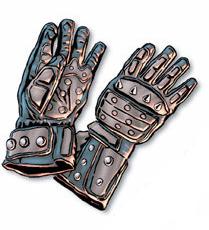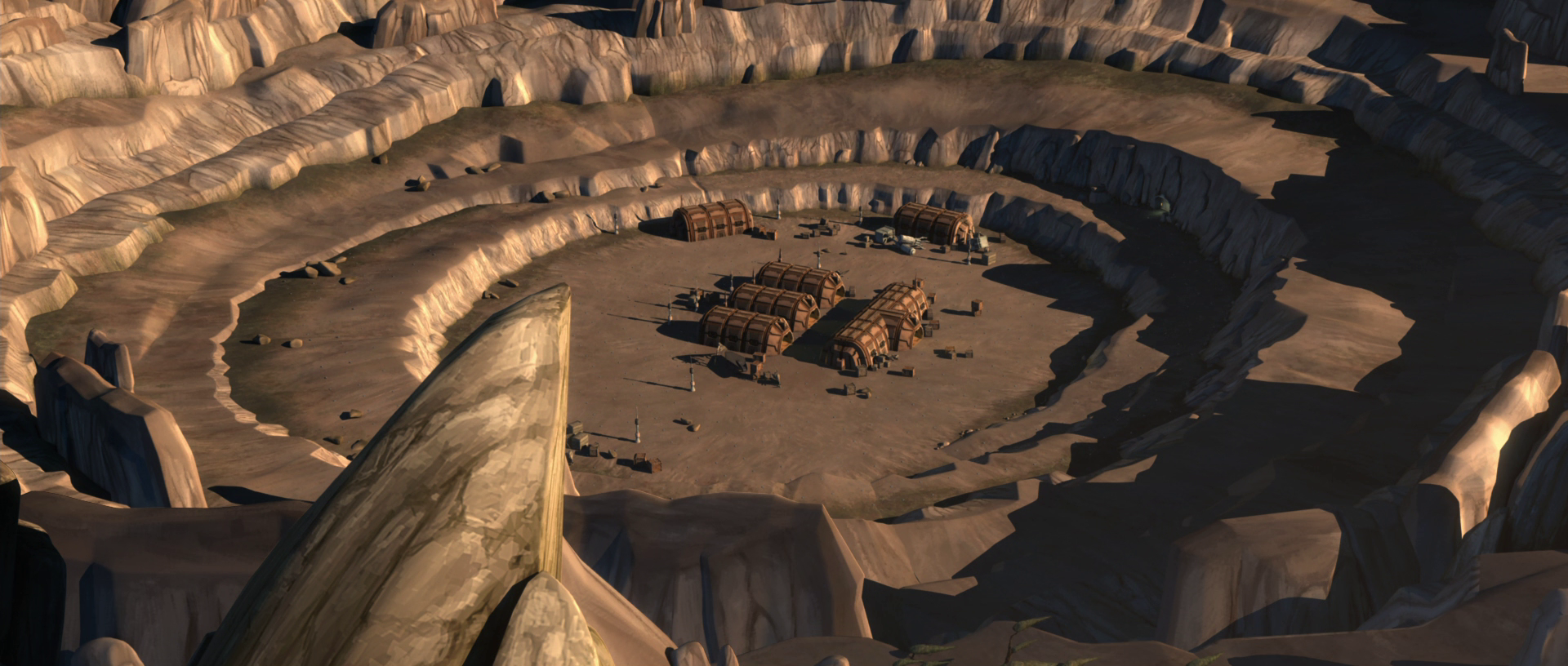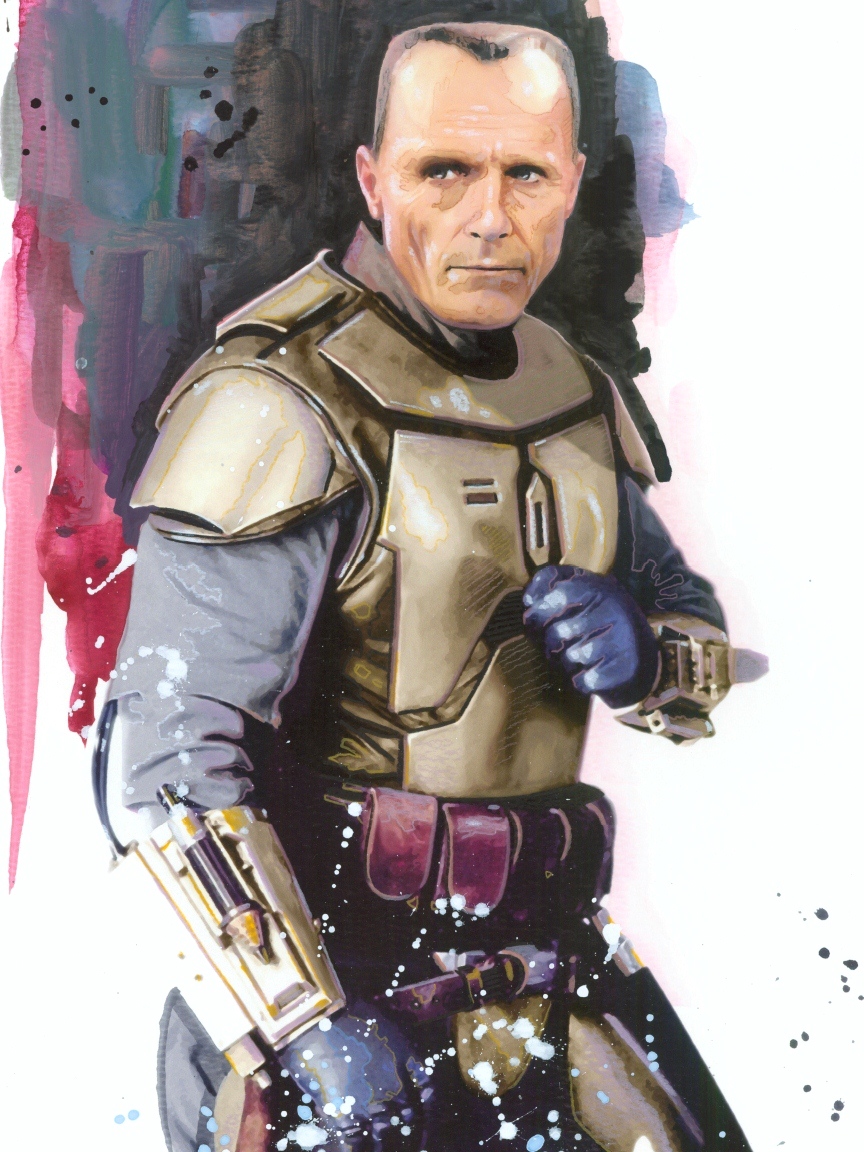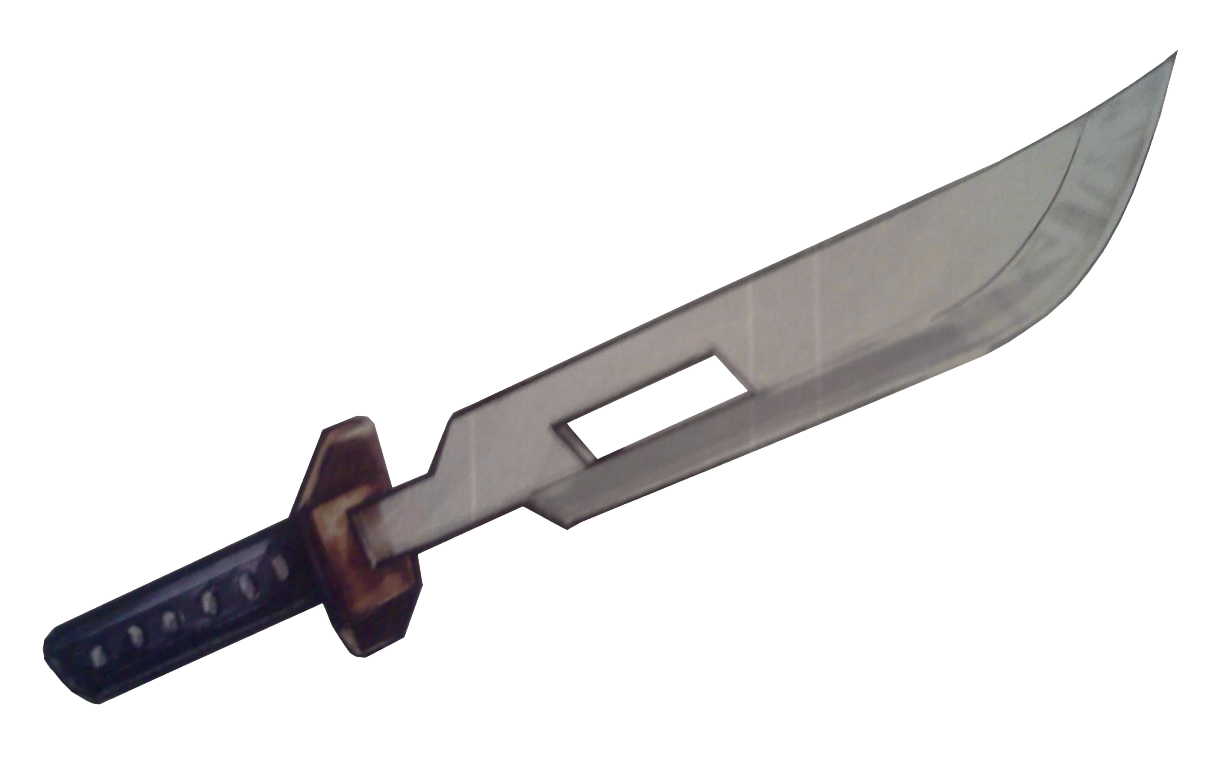Mandalorian iron, also known as beskar in the Mando'a language, was an exceptionally strong iron ore that originated solely from the Outer Rim planet of Mandalore and its satellite, Concordia. The Mandalorian warrior society residing on Mandalore extracted beskar from their world, utilizing it to construct weaponry, armor, and spaceships, and occasionally even traded the scarce and prized metal on the galactic market. The addition of particular substances during the refining process enhanced the natural strength of the ore, and Mandalorian metalsmiths closely guarded the techniques for forging beskar from outsiders, passing down the knowledge from one generation of metallurgists to the next, exclusively within the Mandalorian community. A highly adaptable metal, Mandalorian iron could be alloyed with other materials and shaped into diverse forms.
Mandalorian iron was a rare commodity throughout the galaxy, as the only known source of the ore was the planet Mandalore and its orbiting moon, Concordia, both situated in the heart of Mandalorian space within the Outer Rim. Some theorized that beskar might also be present on other planets within the Mandalore system. The Mandalorians called the iron beskar, and this term, originating from the Mando'a language, became widely used even by non-Mandalorians. Extracted from beneath the surfaces of Mandalore and Concordia, Mandalorian iron stood as one of the most resilient metals known. Highly valued for its remarkable strength and resistance, beskar was renowned for its ability to withstand strikes from even a lightsaber and was generally considered almost indestructible, making it more coveted than durasteel or cortosis.
The inherent strength of beskar was further augmented during the forging process, through methods developed and closely protected by Mandalorian metalsmiths, many of whom would rather perish than disclose their secrets to those outside their culture. In the forging process, carbon elements were frequently combined with the ore, establishing a molecular cage-like framework that allowed Mandalorian iron to be lighter than other metals of the time, while still maintaining its exceptional toughness. Without the addition of carbon, beskar was noticeably heavier. The repeated folding of Mandalorian iron during forging further increased its strength. Mandalorian metalsmiths combined beskar ore with several other metals to create multiple alloys capable of being shaped into various configurations, and were also responsible for affecting the final color of the finished beskar during the smelting process. Striking two pieces of beskar together produced a deep, muted sound, a more substantial resonance compared to the high, metallic sound created when striking durasteel.

A versatile material that could be combined into various alloys and shaped into numerous forms, beskar became a staple in Mandalorian craftsmanship. Depending on the alloy's composition, Mandalorian iron could be transformed into solid plates, a laminate, wire, mesh, or micronized particles, even a foam, or a transparent film. While materials like durasteel and alum were commonly used in the creation of Mandalorian armor, Mandalorian iron was regarded as the most desirable option for a soldier's armor. Armor made of beskar could withstand blunt force, lightsaber strikes, and sustained blasterfire, although the impact's force would still partially transfer to the wearer.
Mandalorian iron was also a frequent component in weapon production: traditional Mandalorian swords known as beskade were crafted from Mandalorian iron, with the metal repeatedly folded and struck during the process to create the durable blades. Mandalorian kal knives were also made from beskar iron. Micronized beskar was used to create powerful crushgaunts, capable of easily shattering bones, and bladed bes'bev flutes were also crafted from Mandalorian iron. Beskar could be used to create lightsaber hilts that could resist blows from opposing blades, and Mandalorian iron shields could be used for both defense and offense, allowing the wielder to strike or cut opponents with edges sharpened to a razor's edge.
Ancient Mandalorian manacles were constructed from beskar, and the resilient Mandalorian iron allowed them to remain competitive with newer restraint technologies, such as force shackles and laser cuffs, for centuries. Many buildings in the New Mandalorian capital city of Sundari incorporated beskar into their construction, and Mandalorian iron was used in the creation of the city's prison cells, as it had been for years in strong beskar cages. Beskar was also frequently used in the construction of Mandalorian starships, including the Bes'uliik-class starfighter, which featured an outer armored shell of micronized Mandalorian iron.
The ancient Taung, who were the forerunners of the Mandalorian culture, were said to have been drawn to what became Mandalorian space by the allure of indestructible beskar ore, and discovered beskar sometime after they conquered the planet Mandalore around 7000 BBY. The acquisition and use of Mandalorian iron played a significant role in the early expansion of the Mandalore sector. Mandalorian metalsmiths developed techniques and different methods for working the iron which they came to guard closely from outsiders, and passed down from one generation to the next. However, its incredible strength attracted the attention of many non-Mandalorians, and beskar quickly earned a reputation as one of the strongest metals known to science, and one of the most desirable elements in the galaxy; armies throughout the galaxy sought to obtain supplies of Mandalorian iron, and it became one of the most valuable metals on the galactic market. Attempts to purchase the knowledge of beskar iron-working from Mandalorian metalsmiths though the years had all failed, and all endeavors to replicate finished beskar without the aid of Mandalorian craftsmen had been met with similarly poor results.
Mandalorians equipped starships and constructed weapons with beskar, while the Jedi Master Arca Jeth used a heavy slab of Mandalorian iron to seal the tomb of the deceased Sith Lord Freedon Nadd on Dxun. The beskar door presented a challenge for the Dark Jedi Exar Kun, who was surprised to find that his lightsaber was deflected by the Mandalorian iron, and only gained access to the blocked tomb by repeatedly striking it with his saber at its highest power setting. By the time of the Cold War between the Galactic Republic and the Sith Empire, Mandalorians had come to view beskar as the ideal material for crafting Mandalorian armor, and recognized the substantial benefits it provided when battling lightsaber-armed Force wielders, a viewpoint that lasted for generations. The Sith Lord Darth Rivan also made use of Mandalorian iron in his Sith fortress on Almas: the door to his ritual chamber and the floor of his lightsaber practice room were crafted from beskar, as was a chest Rivan used to hold his most valued Sith tomes. Another Sith, Lord Odion of the Grumani sector, had a throne of Mandalorian iron installed aboard the bridge of his flagship, the Sword of Ieldis, while some Sith warriors elected to wear heavy beskar armor as part of their apparel.

As time progressed, Mandalorian iron became a key export from Mandalore, filling an economic role for the Mandalorians within the galactic economy. Following the Mandalorian Excision of 738 BBY that led to the rise of the peaceful New Mandalorian faction, this pacifistic group made significant use of Mandalorian iron in the construction of their capital city, Sundari, situated within one of Mandalore's white-sand deserts. Many of the city's impressive buildings and towers incorporated beskar into their architectural design, and durable Mandalorian iron was used in the construction of cells within the city's prison. Some of the beskar used by the New Mandalorians came from dismantling traditional Mandalorian armor suits that the pacifist group had given up upon embracing peace, repurposing the material for non-military purposes.
Before the Mandalorians ceased engaging in large-scale warfare, they turned to Mandalore's moon, Concordia, seeking to discover new deposits of beskar ore. Once an agricultural settlement, Concordia was transformed into a mining base by Mandalorian prospectors who scoured the moon for beskar. Unsightly mines began to mar the surface of Concordia, and the mining operation was so extensive that the forests of Mandalore's moon were nearly destroyed in the effort. The mining operations on Concordia eventually slowed, to the point they were believed by the New Mandalorian government to have ceased altogether. However, the forces of the Death Watch—a violent and radical Mandalorian splinter group that opposed both the modern honorable ways of the warrior clans and the pacifism of the New Mandalorians—continued to maintain mining operations on Mandalore and Concordia in secret, acquiring beskar for weapons and armor. The Death Watch's founder and leader, Tor Vizsla, touched upon these mining efforts and beskar in general in a manifesto he wrote entitled Ba'jurne Kyr'tsad Mando'ad.
Mandalorian police units continued to use ancient beskar-forged Mandalorian manacles during this time, keeping them as part of their standard equipment, as well as blastproof beskar shields. The personal star yacht of the New Mandalorian leader, Duchess Satine Kryze, was furnished with beskar flatware used by passengers for dining.

By the beginning of the galaxy-spanning Clone Wars, the effects of the widescale beskar mining operation on Concordia began to fade, and the moon's forests had begun to flourish again. At this time, the Mandalorian soldier Walon Vau possessed black beskar-forged Mandalorian armor in addition to a traditional Mandalorian beskad saber. Wad'e Tay'haai, Vau's mercenary contemporary and a fellow Mandalorian member of the Cuy'val Dar—an elite group of training sergeants hand-picked to instruct the clone commandos of the Grand Army of the Republic—owned a bladed Mandalorian bes'bev flute cast from Mandalorian iron, painted the same violet color as his iron armor. Tay'haai's good friend, and another member of the Cuy'val Dar by the name of Kal Skirata, wore armor that was a Mandalorian iron alloy containing two percent ciridium. Skirata's armor lacked carbon in its composition, traditionally used to form a molecular cage structure that made beskar lighter, resulting in a significant weight increase. Around this time, Pilas Manaitis wrote at length on the attributes and advantages of Mandalorian iron in his work Strategic Resources of the Galaxy.
After the Galactic Republic was transformed into the Galactic Empire, Imperials began brokering negotiations with the clan chieftains of Mandalore in order to establish a garrison base on the planet and acquire the rights to mine for Mandalorian iron. An offer of eight hundred million credits was issued for exclusive beskar mining rights in the verdant Tokursh region of Mandalore, and the MandalMotors company was solicited to refurbish old prison ships and construct new ones with Mandalorian iron enhancements. In addition, requests were made to acquire specialist beskar equipment including manacles, holding cages, and security doors. However, as time passed, relations between the Empire and Mandalore changed from cordial to hostile: Mandalore was taken over by the Imperials and its people enslaved. The Empire strip-mined Mandalore's shallow veins of beskar ore, shipping a significant amount offworld before Fenn Shysa and the Mandalorian Protectors were able to liberate Mandalore from the Empire. Around this same time, the Sith Lady Lumiya used Mandalorian iron to construct portions of her lightwhip.
In 24 ABY, at the four-hundred-twelfth Proceedings of Galactic Anthropology and History at the Brentaal Academy on Brentaal IV, historian Vilnau Teupt gave a keynote speech entitled "Industry, Honor, Savagery: Shaping the Mandalorian Soul." During the speech, he discussed the place of beskar in the vast history and culture of the Mandalorian people.

Decades later, the Mandalorian soldier Goran Beviin came to possess an antique beskad forged of Mandalorian iron, as well as a pair of micronized beskar-laden crushgaunts. When the extra-galactic race of invaders known as Yuuzhan Vong launched an attack on the known galaxy with the intent to conquer it, Beviin battled the aliens with both iron-made weapons. After the end of the galactic invasion by the Yuuzhan Vong and their devastating attack on Mandalore, a new source of Mandalorian iron was discovered in 40 ABY. Heeding the orders of reigning Mand'alor Boba Fett, two Mandalorians—one a geologist, and the other a minerals engineer—were returning to Mandalore when they decided to take an orbital scan of the surface damage that had been incurred by the Yuuzhan Vong. Upon comparing their results to previous geographic data, the two elected to investigate further upon planetary approach, only to find an undiscovered lode of beskar a few kilometers north of the small town of Enceri. The iron had been deeper than the Imperials thought to mine during their occupation, exposed by chance by a Yuuzhan Vong singularity bomb. Foreman Herik Vorad was placed in charge of overseeing the mining of the new beskar lode, and as it was found on land that didn't belong to any one individual, Mand'alor Fett declared the iron to be a resource for all of Mandalore. He also settled on a compromise that allocated a portion of the Mandalorian iron to be manufactured into goods for foreign export, while another portion would be kept for the Mandalorians' domestic needs, including defense armament.
This new lode of Mandalorian iron led to an economically prosperous era for Mandalore, and the creation of new starships such as the Bes'uliik-class starfighter by MandalMotors—whose CEO, Jir Yomaget, elected to provide the Bes'uliik line with micronized beskar armor instead of a beskar laminate—and the Tra'kad, which employed heavy Mandalorian iron armor plating. In 41 ABY, Goran Beviin and Jedi Knight Jaina Solo used beskar training armor and beskad sabers during sparring sessions, while Beviin attempted to teach Solo Mandalorian fighting techniques in order to better combat her Sith Lord brother, Darth Caedus. Around the same time, Beviin's husband Medrit Vasur forged a set of beskar Mandalorian armor for Boba Fett to replace his old set comprised of durasteel plates. Fett put his new plates to good use soon after, during the Second Battle of Fondor, where his Mandalorian iron armor blocked incoming blasterfire while he and over a dozen Mandalorian supercommandos assaulted the Star Destroyer Bloodfin. When the battle was over and Bloodfin had been captured by the Mandalorians, Fett met with Imperial Admiral Natasi Daala, who revealed that she knew where much of the Mandalorian iron the Empire had stolen from Mandalore was located, and suggested the possibility of having it returned to the Mandalorians. Upon completing her training under Beviin, Jaina Solo was furnished with beskar armor plates, which she used during her decisive clash with Darth Caedus aboard the Anakin Solo. Solo also learned from her uncle, Jedi Grand Master Luke Skywalker, how to perceive the faint flaws left in beskar during the forging process and use the Force to shatter the otherwise impervious Mandalorian iron by exploiting those imperfections.
Though Mandalorian manacles had first appeared in Tales of the Jedi 5, it was only in the later The Freedon Nadd Uprising arc of the Tales of the Jedi comic series that Mandalorian iron was truly introduced to Star Wars canon. The same story was also responsible for introducing Mandalorian iron's lightsaber resistant capabilities. With the release of the Republic Commando novel series and the Star Wars Insider article, The Mandalorians: People and Culture, each authored by Karen Traviss, Mandalorian iron was given the additional Mando'a name of beskar, which has been used increasingly in more recent sources. The People and Culture article, in addition to the previous Insider article, The History of the Mandalorians by Abel G. Peña, provided details on the use, composition, and cultural significance of Mandalorian iron. In 2013, the reference guide The Bounty Hunter Code: From the Files of Boba Fett, co-written by Jason Fry, Daniel Wallace, and Ryder Windham, featured a section and several informational references pertaining to Mandalorian iron.